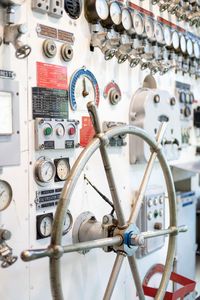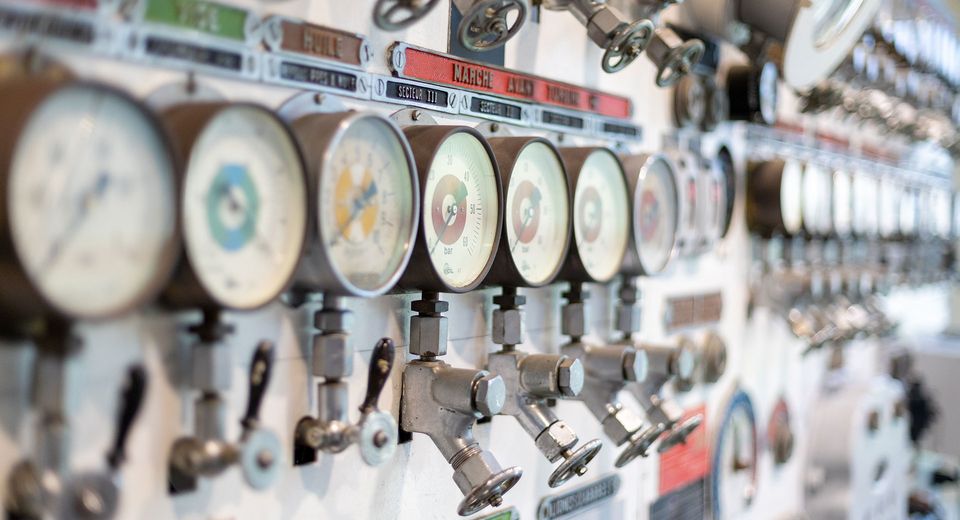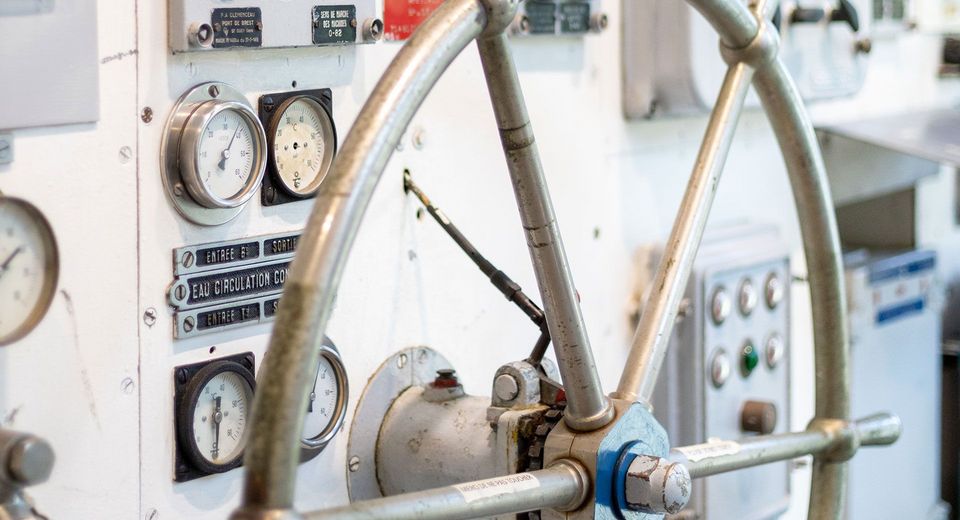Control panel of the Clemenceau
Toulon
Forward steam engine control panel from the aircraft carrier Clemenceau (1961-1997)
The Clemenceau was the second aircraft carrier to be built in France, after the Béarn. It was equipped with this control panel.
The control panel
 Enlarge image : Close view of the panel with the handweel
Enlarge image : Close view of the panel with the handweel
The aircraft carrier Clemenceau was equipped with an engine control panel operating a propulsion system composed of six boilers, four steam turbines and two propellers. Steam produced from fuel oil powered the turbines or “turbo-reducer units”. These latter then activated two drive systems known as “shaft lines”, which set the ship’s propellers in motion. A large handwheel on the control panel acted on the vessel’s speed by regulating the amount of steam fed to the turbines, while the numerous dials and various meters and setting devices controlled the steam generators and turbines. An order transmission system enabled the ship’s engineers to adjust its speed in compliance with instructions transmitted from the bridge.
The engineers worked in arduous conditions caused by the extreme heat that pervaded the engine rooms, which became all the more intense during expeditions in hot climates, when the temperature could reach 45 degrees!
The Clemenceau was the last ship in the French Navy to be equipped with this kind of control panel: these days, all such equipment is computerised. With Toulon as its port of registration, this giant of the seas sailed all the world’s oceans, travelling the equivalent of eighteen round-the-world voyages between 1961 and 1997, when it was decommissioned.
Collection highlight
The essential works to see during your visit to the Musée national de la Marine in Brest, Port-Louis, Rochefort, Toulon, and soon in Paris.


